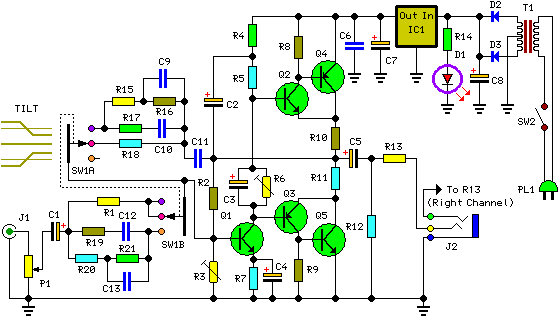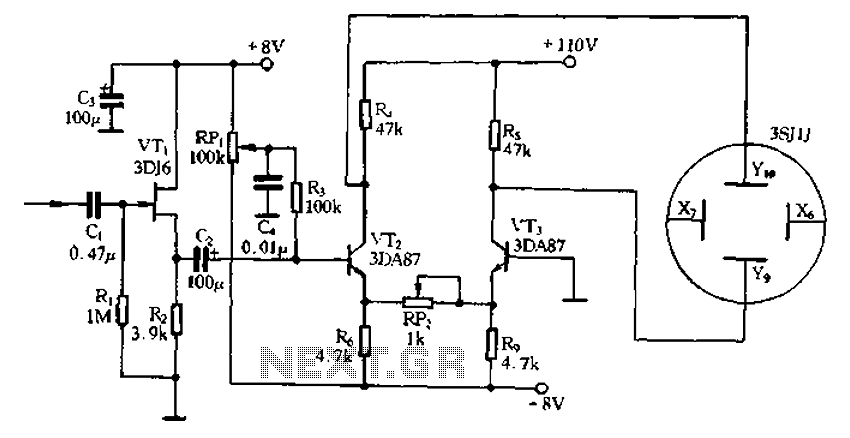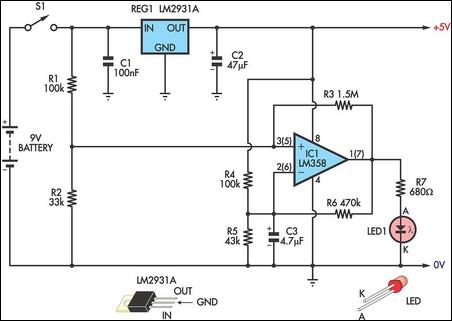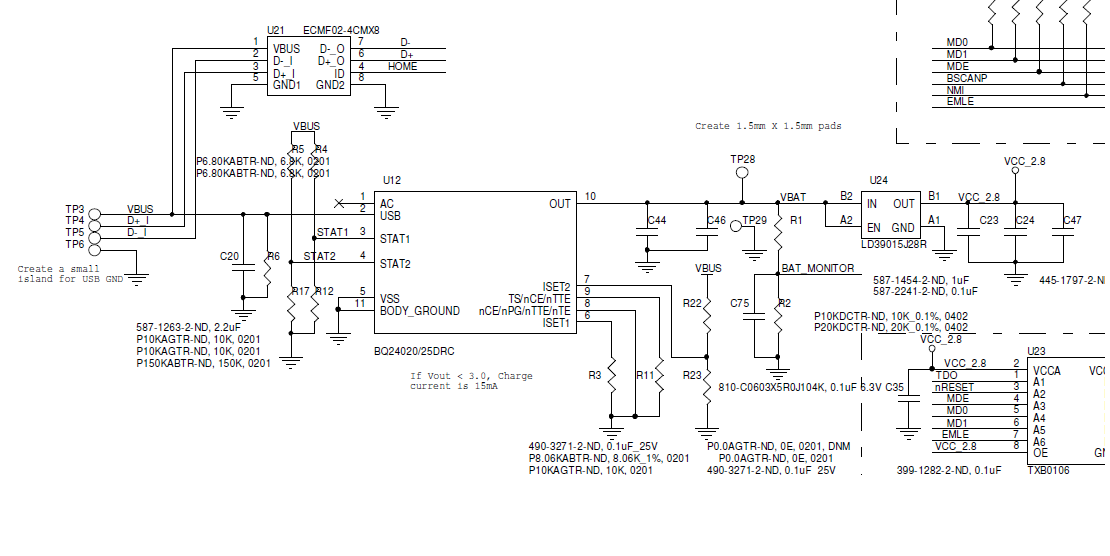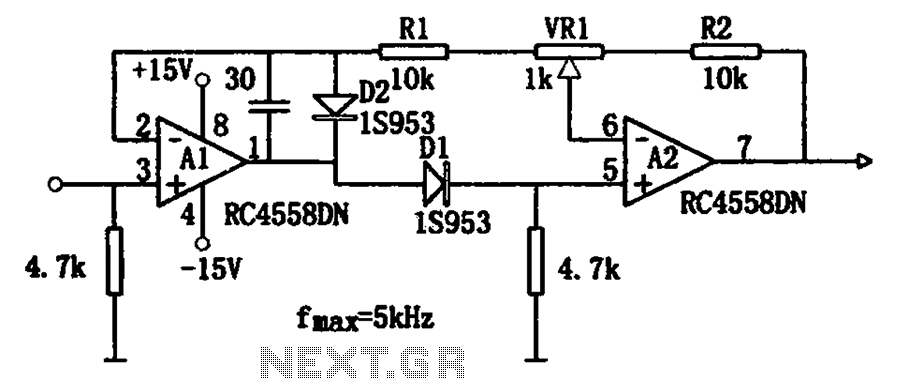
Simple Mobile Phone Battery Charger
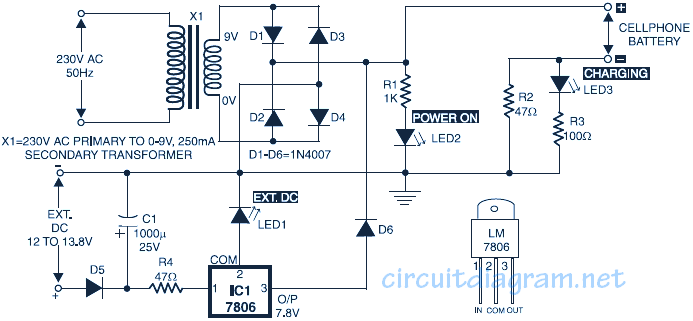
The 220-240V AC mains source is stepped down to 9V AC by transformer X1. The transformer output is rectified by diodes D1 through D4 connected in a bridge configuration, with the positive DC voltage wired directly to the charger's output terminal, while the negative terminal connects through a current-limiting resistor R2. LED2 functions as a power indicator, with resistor R1 acting as the current limiter, while LED3 indicates the charging status. During the charging process, approximately 3 volts drop occurs across resistor R2, activating LED3 through resistor R3. The diagram illustrates a simple mobile phone battery charger circuit, which is straightforward, easy to assemble, and cost-effective. It utilizes the LM78xx regulator to provide a regulated and stable output voltage. Commercial mobile phone chargers are often expensive, making this circuit a viable low-cost alternative for charging cells. This battery charger circuit is both regulated and adjustable, enabling it to charge most NiCAD batteries. It is compatible with single or multiple battery cells connected in series or parallel, with a maximum voltage of 18V for the batteries. Power transistors Q1 and Q2 are configured as series regulators. Additionally, a simple battery level indicator circuit is presented, which typically displays battery levels in a dot or bar style, aiding in the easy recognition of battery status. This circuit can be used as a mobile charger and includes protective features to safeguard the mobile phone from unauthorized use or theft, generating a loud chirping sound if someone attempts to remove the device. Furthermore, a schematic diagram for a solar-powered mobile phone battery charger is included, designed to charge batteries from a lower voltage source. Caution is advised not to use it for charging batteries with the same or lower voltage than that produced by the solar panel. Lastly, a simple circuit diagram for a 12V car battery charger is provided, which claims to prevent battery overcharging that may lead to electrolyte evaporation. This circuit addresses the issue by monitoring the battery's charge condition through a retroactive control mechanism.
The circuit operates by first transforming the high-voltage AC mains into a lower AC voltage suitable for charging applications. The transformer X1 is key to this process, stepping down the voltage to 9V AC. The subsequent rectification stage employs a bridge rectifier configuration using diodes D1 to D4, which efficiently converts the AC voltage into a pulsating DC voltage. The positive output from the rectifier is directly connected to the output terminal of the charger, while the negative side is routed through resistor R2, which serves to limit the current flowing into the load, preventing potential damage from excessive current.
LED2 is incorporated into the design as a power indicator, providing visual confirmation that the charger is operational. Resistor R1 is used to limit the current through LED2, ensuring it operates within safe parameters. Additionally, LED3 serves as a charging status indicator, which is illuminated when the charging process is active. The voltage drop across R2 during charging activates LED3 through resistor R3, providing feedback to the user regarding the charging state.
The LM78xx voltage regulator is employed to maintain a consistent and stable output voltage, which is crucial for safely charging batteries. This regulator can be adjusted to suit various charging requirements, making the circuit versatile for different types of battery chemistries, particularly NiCAD batteries. The design supports both single-cell and multi-cell configurations, allowing for flexibility in battery arrangements, with a maximum permissible voltage of 18V for the connected batteries.
Power transistors Q1 and Q2 are utilized as series regulators, enhancing the circuit's ability to handle varying load conditions while maintaining output stability. The inclusion of a battery level indicator circuit provides valuable information regarding the battery's charge status, typically represented in a user-friendly format such as dots or bars.
The mobile charger circuit also features an anti-theft mechanism, producing a loud chirping sound when unauthorized removal of the mobile phone is attempted. This added functionality enhances the security of the device, making it suitable for use in public or shared environments.
For applications involving solar power, the solar-powered mobile phone battery charger is designed to efficiently charge batteries from a lower voltage source, with careful consideration to avoid using it for batteries that cannot accept the generated voltage from the solar panel. The car battery charger circuit is designed with safety features to prevent overcharging, utilizing a feedback control mechanism to monitor and regulate the charging process, thus preserving the longevity of the battery.The 220-240V AC mains source is stepped down to 9V AC by transformer X1. The transformer output is rectified by diodes D1 through D4 connected in bridge configuration and the positive DC source is straightly wired to the charger`s output contact, while the negative terminal is connected through current limiting resistor R2. LED2 operates as being a power indicator with resistor R1 serving as the current limiter and LED3 signifies the charging status. While in the charging period, about 3 volts drop happens across resistor R2, which switches on LED3 through resistor R3.
The following diagram is a simple mobile phone battery charger circuit. The design is simple, easy to build and inexpensive. It use LM78xx regulator to make regulated and stable output voltage. Mobile phone chargers offered in the marketplace are quite expensive. The circuit shown right here shows up as a low-cost option to charge cell. This battery charger circuit is regulated and adjustable to make this circuit able to charge the mosto NiCAD battery. This circuit will work for single cell or multi battery cell which connected with series/parallel connection.
The maximum voltage of the batteries should be 18V maximum. Power transistors Q1 and Q2 are connected as series regulators. Here the circuit diagram of simple and easy made battery level indicator. In general, in mobile phones, the battery levels is displayed in dot or bar style. This helps you to effortlessly acknowledge the battery level. On this page we provide a circuit that helps you to recognize the battery level of a instrument from. This is the cell phone shield circuit which can be used as mobile charger. Give protection to your cell phone from unexpected use or theft working with this easy circuit. It is able to produce a loud chirping sound when someone tries to take away the mobile handset. The added function is that the circuit. This is the schematic diagram of solar powered mobile phone battery charger. The circuit is designed to charge the battery from a source with a lower voltage. Do not use it to charge the battery with the same or lower voltage than the voltage which is generated by the solar panel.
For proper operation of. Here is a simple and easy to build circuit diagram of a 12V car battery charger: The above circuit claimed have ability to prevent battery overcharge that make electrolyte lost due to evaporation. This circuit will eliminate the problems by monitoring the battery`s condition of charge through its retroactive control circuit by applying a high.
🔗 External reference
The circuit operates by first transforming the high-voltage AC mains into a lower AC voltage suitable for charging applications. The transformer X1 is key to this process, stepping down the voltage to 9V AC. The subsequent rectification stage employs a bridge rectifier configuration using diodes D1 to D4, which efficiently converts the AC voltage into a pulsating DC voltage. The positive output from the rectifier is directly connected to the output terminal of the charger, while the negative side is routed through resistor R2, which serves to limit the current flowing into the load, preventing potential damage from excessive current.
LED2 is incorporated into the design as a power indicator, providing visual confirmation that the charger is operational. Resistor R1 is used to limit the current through LED2, ensuring it operates within safe parameters. Additionally, LED3 serves as a charging status indicator, which is illuminated when the charging process is active. The voltage drop across R2 during charging activates LED3 through resistor R3, providing feedback to the user regarding the charging state.
The LM78xx voltage regulator is employed to maintain a consistent and stable output voltage, which is crucial for safely charging batteries. This regulator can be adjusted to suit various charging requirements, making the circuit versatile for different types of battery chemistries, particularly NiCAD batteries. The design supports both single-cell and multi-cell configurations, allowing for flexibility in battery arrangements, with a maximum permissible voltage of 18V for the connected batteries.
Power transistors Q1 and Q2 are utilized as series regulators, enhancing the circuit's ability to handle varying load conditions while maintaining output stability. The inclusion of a battery level indicator circuit provides valuable information regarding the battery's charge status, typically represented in a user-friendly format such as dots or bars.
The mobile charger circuit also features an anti-theft mechanism, producing a loud chirping sound when unauthorized removal of the mobile phone is attempted. This added functionality enhances the security of the device, making it suitable for use in public or shared environments.
For applications involving solar power, the solar-powered mobile phone battery charger is designed to efficiently charge batteries from a lower voltage source, with careful consideration to avoid using it for batteries that cannot accept the generated voltage from the solar panel. The car battery charger circuit is designed with safety features to prevent overcharging, utilizing a feedback control mechanism to monitor and regulate the charging process, thus preserving the longevity of the battery.The 220-240V AC mains source is stepped down to 9V AC by transformer X1. The transformer output is rectified by diodes D1 through D4 connected in bridge configuration and the positive DC source is straightly wired to the charger`s output contact, while the negative terminal is connected through current limiting resistor R2. LED2 operates as being a power indicator with resistor R1 serving as the current limiter and LED3 signifies the charging status. While in the charging period, about 3 volts drop happens across resistor R2, which switches on LED3 through resistor R3.
The following diagram is a simple mobile phone battery charger circuit. The design is simple, easy to build and inexpensive. It use LM78xx regulator to make regulated and stable output voltage. Mobile phone chargers offered in the marketplace are quite expensive. The circuit shown right here shows up as a low-cost option to charge cell. This battery charger circuit is regulated and adjustable to make this circuit able to charge the mosto NiCAD battery. This circuit will work for single cell or multi battery cell which connected with series/parallel connection.
The maximum voltage of the batteries should be 18V maximum. Power transistors Q1 and Q2 are connected as series regulators. Here the circuit diagram of simple and easy made battery level indicator. In general, in mobile phones, the battery levels is displayed in dot or bar style. This helps you to effortlessly acknowledge the battery level. On this page we provide a circuit that helps you to recognize the battery level of a instrument from. This is the cell phone shield circuit which can be used as mobile charger. Give protection to your cell phone from unexpected use or theft working with this easy circuit. It is able to produce a loud chirping sound when someone tries to take away the mobile handset. The added function is that the circuit. This is the schematic diagram of solar powered mobile phone battery charger. The circuit is designed to charge the battery from a source with a lower voltage. Do not use it to charge the battery with the same or lower voltage than the voltage which is generated by the solar panel.
For proper operation of. Here is a simple and easy to build circuit diagram of a 12V car battery charger: The above circuit claimed have ability to prevent battery overcharge that make electrolyte lost due to evaporation. This circuit will eliminate the problems by monitoring the battery`s condition of charge through its retroactive control circuit by applying a high.
🔗 External reference
